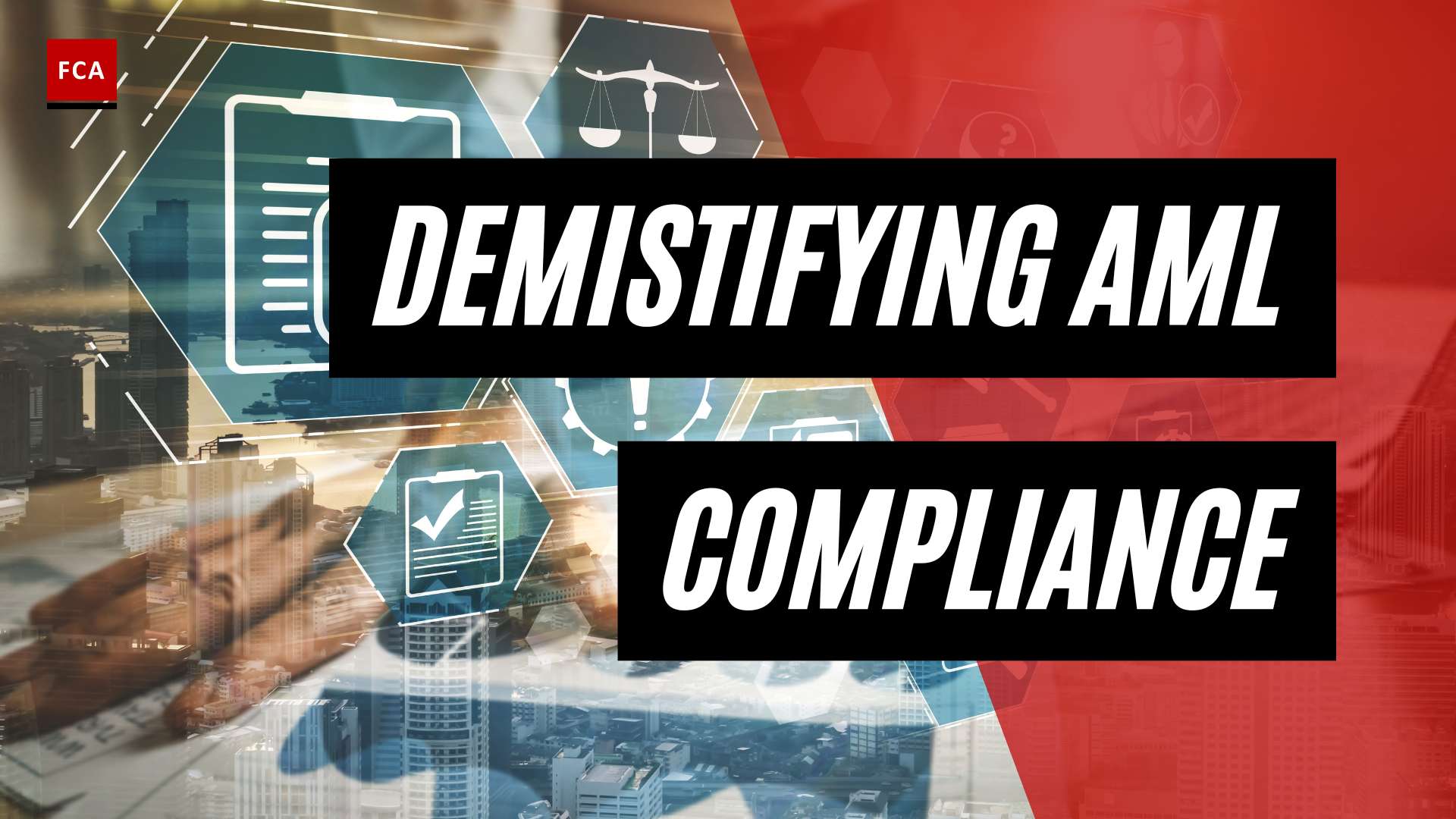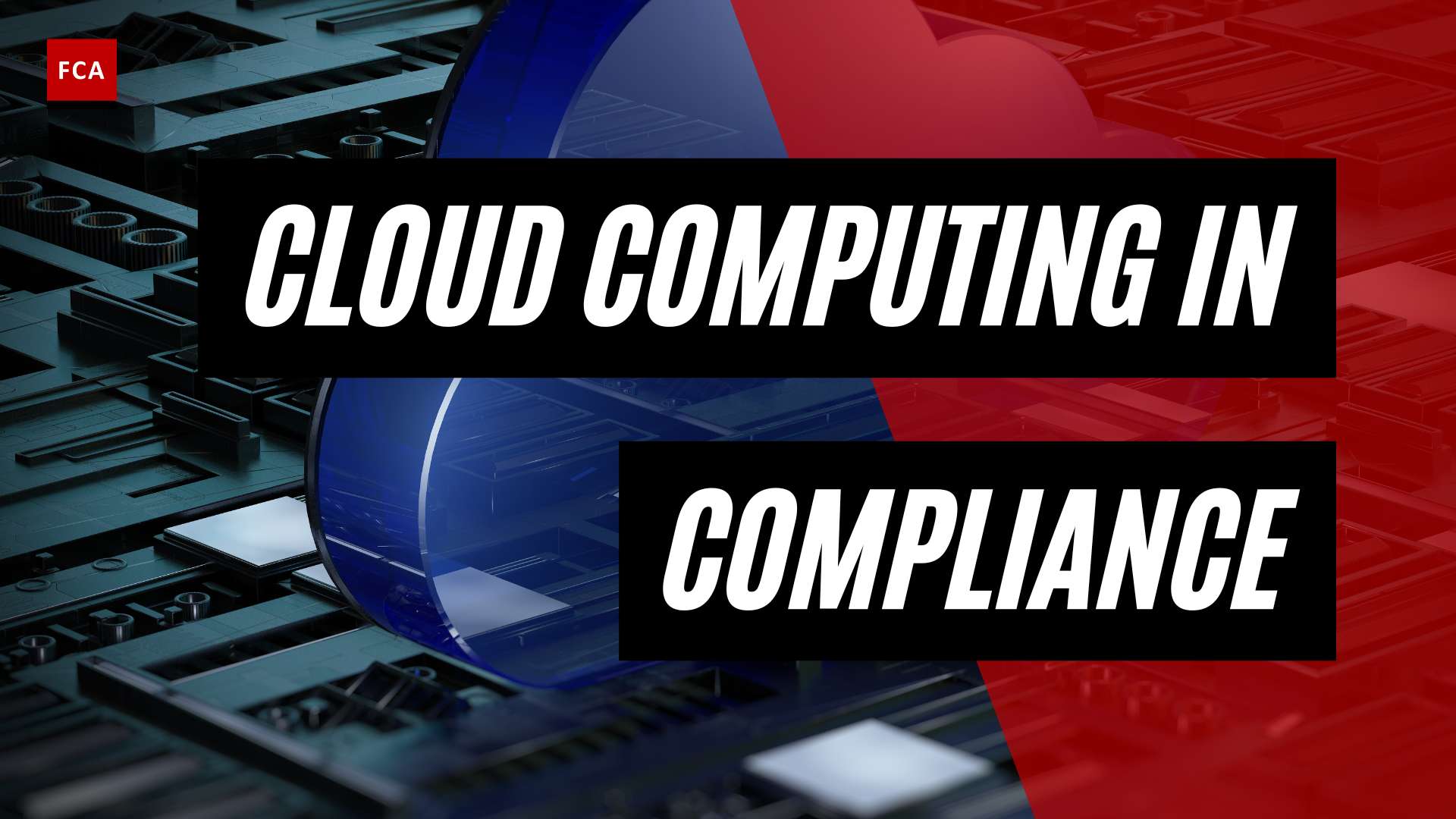Introduction to AML Compliance Software
To combat the increasing risks of money laundering and financial crimes, organizations across various industries rely on AML compliance software to strengthen their regulatory compliance efforts. AML, or Anti-Money Laundering, compliance software plays a vital role in automating compliance processes, minimizing risks, and preventing money laundering activities.
What is AML Compliance Software?
AML compliance software refers to a set of software solutions designed to assist organizations in meeting their obligations under anti-money laundering laws and regulations. This software leverages advanced technologies, such as machine learning, artificial intelligence, data analytics, and rules-based engines, to analyze vast amounts of data and identify patterns associated with potentially fraudulent activities (Creatio).
AML compliance software encompasses a range of functionalities, including transaction monitoring, sanctions screening, risk assessment, and reporting. With these capabilities, organizations can efficiently assess and monitor customer behavior, detect suspicious transactions, and ensure compliance with AML regulations.
Importance of AML Compliance Software
The importance of AML compliance software cannot be overstated, particularly in heavily regulated industries such as finance and banking. By automating compliance processes, AML compliance software improves efficiency, reduces manual workloads, and enhances the accuracy and effectiveness of AML compliance efforts (Creatio).
Financial institutions and other regulated entities heavily rely on AML compliance software to meet their legal obligations, avoid penalties for non-compliance, and safeguard their reputation. These software solutions enable organizations to strengthen their due diligence procedures, monitor transactions in real-time, and create audit trails to demonstrate compliance with AML laws and regulations.
The key benefits of AML compliance software include:
- Automating Compliance Processes: AML compliance software streamlines compliance processes by automating tasks such as customer due diligence, transaction monitoring, and regulatory reporting. This automation reduces the risk of human error and enables organizations to handle larger volumes of data efficiently.
- Minimizing Risks and Preventing Money Laundering: By analyzing customer behavior and detecting suspicious transactions, AML compliance software helps organizations identify potential money laundering activities and take appropriate action in a timely manner. This proactive approach minimizes the risk of financial crimes and aids in maintaining a robust AML compliance program.
- Enhancing Efficiency and Accuracy: AML compliance software leverages advanced technologies to enhance the efficiency and accuracy of compliance efforts. Machine learning algorithms and artificial intelligence capabilities help improve detection accuracy, reduce false positives, and optimize workflows, enabling organizations to focus their resources on high-risk areas.
In summary, AML compliance software is a crucial tool for organizations aiming to comply with anti-money laundering regulations, mitigate risks, and combat financial crimes. By utilizing these software solutions, organizations can automate compliance processes, minimize risks, and ensure regulatory compliance, thereby safeguarding their reputation and avoiding penalties for non-compliance.
Types of AML Compliance Software
To effectively combat money laundering and comply with anti-money laundering (AML) regulations, companies rely on various types of AML compliance software. These software solutions automate compliance processes, enhance efficiency, and minimize risks associated with financial crime. Some of the key types of AML compliance software include transaction monitoring software, sanctions screening software, risk assessment software, and reporting software.
Transaction Monitoring Software
Transaction monitoring software plays a crucial role in detecting and preventing suspicious financial activities. It analyzes vast amounts of data from multiple sources, such as transaction records, customer profiles, and historical data, to identify patterns and flag potentially fraudulent transactions. By using advanced technologies like machine learning, artificial intelligence, and data analytics, transaction monitoring software helps financial institutions and other regulated entities assess customer behavior, monitor transactions in real-time, and identify any suspicious activities that may indicate money laundering or other financial crimes.
Sanctions Screening Software
Sanctions screening software is designed to verify and screen customer information against various global watchlists and sanctions databases. By checking customer names, addresses, and other identifying information against these lists, the software helps organizations ensure compliance with international sanctions programs and regulations. Sanctions screening software provides real-time alerts when a potential match is found, allowing companies to investigate further and take appropriate action if necessary.
Risk Assessment Software
Risk assessment software assists organizations in evaluating and managing the risks associated with money laundering and other financial crimes. It helps companies assess the level of risk posed by their customers, business relationships, and transactions. By analyzing factors such as customer profiles, transactional behavior, and geographic information, risk assessment software assigns risk ratings to different entities. This enables organizations to focus their compliance efforts on higher-risk areas and allocate resources more effectively.
Reporting Software
AML reporting software facilitates the generation and submission of regulatory reports required by AML authorities. It automates the process of compiling and formatting data from various sources, ensuring accurate and timely reporting. AML reporting software helps organizations streamline their reporting obligations, maintain compliance with regulatory requirements, and provide authorities with the necessary information to combat money laundering effectively.
By utilizing these different types of AML compliance software, organizations can enhance their anti-money laundering efforts, automate compliance processes, and minimize the risks associated with financial crime. These software solutions play a crucial role in ensuring regulatory compliance, safeguarding reputations, and protecting the financial system from illicit activities. For more information on AML compliance software and other related topics, visit our AML software solutions page.
How AML Compliance Software Works
To effectively combat money laundering and comply with anti-money laundering (AML) regulations, financial institutions and organizations rely on AML compliance software. This software utilizes advanced technologies and analytical capabilities to automate and streamline the processes involved in detecting, monitoring, and reporting suspicious financial activities. Let’s explore how AML compliance software works in more detail.
Utilizing Advanced Technologies
AML compliance software leverages advanced technologies such as machine learning, artificial intelligence, data analytics, and rules-based engines to analyze vast amounts of data and identify patterns of potentially fraudulent activities. By utilizing these technologies, the software can effectively sift through large volumes of financial transactions and other relevant data, allowing for more efficient and accurate identification of suspicious activities.
Analyzing Data and Identifying Patterns
One of the key functions of AML compliance software is the analysis of data. The software examines transactional data, customer information, and other relevant data sources to identify patterns and anomalies that may indicate potential money laundering or other illicit activities. By employing machine learning algorithms and artificial intelligence, the software can continuously learn and adapt to evolving financial crime trends, enhancing its ability to identify suspicious activities with greater accuracy (Validient).
Detecting Suspicious Transactions
AML compliance software plays a crucial role in detecting suspicious transactions. It applies predefined rules and risk-based scenarios to the analyzed data, flagging transactions that exhibit characteristics commonly associated with money laundering. These flagged transactions are then further investigated by compliance professionals to determine if they warrant reporting to the appropriate authorities. By automating this process, AML compliance software minimizes the risk of missing potentially illicit activities and helps financial institutions meet their regulatory obligations (Financial Crime Academy).
By utilizing advanced technologies, analyzing data, and detecting suspicious transactions, AML compliance software assists financial institutions and organizations in combating money laundering and complying with AML regulations. The software’s ability to automate and streamline AML processes improves efficiency and accuracy in identifying and reporting potentially fraudulent activities. This not only helps protect financial institutions from penalties and reputational damage but also strengthens the overall integrity of the financial system.
Benefits of AML Compliance Software
AML compliance software plays a vital role in the fight against money laundering and the adherence to regulatory requirements. By leveraging advanced technologies and data analytics, AML compliance software provides numerous benefits for businesses and financial institutions.
Automating Compliance Processes
One of the key benefits of AML compliance software is its ability to automate various compliance processes. This automation reduces the burden of manual workloads and allows organizations to streamline their compliance efforts. By automating tasks such as customer due diligence, transaction monitoring, and suspicious activity reporting, businesses can save time, improve operational efficiency, and allocate resources more effectively.
Minimizing Risks and Preventing Money Laundering
AML compliance software is designed to minimize the risks associated with money laundering activities. By assessing and monitoring customer behavior, analyzing transactional data, and utilizing machine learning and artificial intelligence capabilities, the software can identify patterns and flag potentially fraudulent or suspicious activities. This proactive approach helps businesses prevent money laundering, terrorist financing, and other financial crimes.
Enhancing Efficiency and Accuracy
The implementation of AML compliance software significantly enhances the efficiency and accuracy of compliance efforts. By leveraging advanced technologies, such as machine learning and rules-based engines, the software can analyze vast amounts of data in real-time. This enables organizations to identify and respond to potential risks promptly. Additionally, the automation of compliance processes reduces the likelihood of human errors, ensuring greater accuracy and consistency in compliance activities.
By utilizing AML compliance software, organizations can strengthen their compliance programs, improve risk management practices, and demonstrate their commitment to regulatory compliance. The software assists in creating detailed reports and audit trails, ensuring transparency, accountability, and documentation of compliance efforts to regulatory authorities and auditors.
To explore further AML compliance software solutions and understand their specific applications, please visit our article on aml software solutions.
AML compliance software is an indispensable tool for financial institutions, banks, and other regulated entities. It enables these organizations to comply with anti-money laundering regulations, mitigate regulatory risks, avoid penalties, and safeguard their reputation. By implementing robust AML compliance software, businesses can effectively combat financial crimes, protect their customers, and contribute to a safer financial ecosystem.
AML Compliance Software for Financial Institutions
Financial institutions play a critical role in combatting money laundering and adhering to regulatory requirements. AML compliance software serves as a powerful tool in supporting their compliance and risk management efforts.
Key Role in Compliance and Risk Management
AML compliance software plays a key role in ensuring that financial institutions meet their compliance and risk management obligations. These software solutions assist in streamlining and automating various aspects of anti-money laundering processes, reducing manual workloads and increasing operational efficiency (Creatio).
By implementing AML compliance software, financial institutions can enhance their ability to monitor customer behavior and detect suspicious activities in real-time. This proactive approach enables institutions to comply with Anti-Money Laundering (AML) regulations effectively. The software’s sophisticated algorithms and analytical capabilities enable the identification of patterns and anomalies that may indicate potential money laundering or other financial crimes.
Ensuring Regulatory Compliance
Regulatory compliance is a paramount concern for financial institutions. AML compliance software assists in ensuring that institutions adhere to AML laws and regulations. These software solutions help organizations assess customer risk profiles accurately, detect suspicious activities, maintain records, and comply with sanctions lists (Sanction Scanner).
Moreover, AML compliance software assists financial institutions in creating detailed reports and audit trails, providing transparency and accountability in compliance efforts to regulatory authorities and auditors. These reports and documentation help demonstrate the institution’s commitment to compliance and aid in regulatory inspections (Financial Crime Academy).
Avoiding Penalties and Safeguarding Reputation
Failure to comply with AML regulations can result in severe penalties and reputational damage for financial institutions. AML compliance software helps institutions minimize risks and prevent money laundering, safeguarding their reputation and integrity.
By automating compliance processes, AML compliance software reduces the likelihood of manual errors and ensures accuracy in AML efforts. The software’s capabilities, such as customer due diligence, transaction monitoring, and regulatory reporting, assist in identifying potential money laundering threats and preventing financial crimes. Financial institutions can efficiently manage the vast amounts of data generated by regulatory compliance obligations, aiding AML officers in fulfilling their responsibilities to their institutions and financial authorities (ComplyAdvantage).
By implementing robust AML compliance software, financial institutions can demonstrate their commitment to regulatory compliance, mitigate risks, and protect themselves from penalties and reputational harm.
In the next section, we will explore the factors financial institutions should consider when choosing AML compliance software, taking into account the size and complexity of the organization, levels of regulatory scrutiny, and industry specifics.
Factors to Consider When Choosing AML Compliance Software
When it comes to selecting the right AML compliance software, there are several factors that organizations need to carefully consider. These factors play a crucial role in ensuring that the chosen software is suitable for the specific needs and requirements of the organization.
Size and Complexity of the Organization
The size and complexity of the organization are important considerations when choosing AML compliance software. Larger organizations with a higher volume of transactions and more complex operations may require robust software that can handle large amounts of data and perform complex analyses. On the other hand, smaller organizations may benefit from software that is more streamlined and easier to implement.
It is crucial to assess the scalability of the software to accommodate potential growth and changes within the organization. This ensures that the chosen software can effectively adapt to the organization’s evolving needs over time.
Levels of Regulatory Scrutiny
The levels of regulatory scrutiny faced by an organization should also be taken into account when selecting AML compliance software. Different industries and regions may have varying degrees of regulatory requirements and compliance standards. It is essential to choose software that aligns with the specific regulations and compliance frameworks relevant to the organization.
By considering the regulatory landscape, organizations can ensure that the chosen software provides the necessary features and capabilities to meet compliance obligations. This includes features such as robust transaction monitoring, sanctions screening, risk assessment, and reporting functionalities.
Industry Specifics
Industry-specific considerations are another crucial factor when choosing AML compliance software. Each industry may have unique characteristics, risk profiles, and regulatory requirements. It is important to select software that is tailored to the industry’s specific needs and can address its particular challenges.
For example, financial institutions such as banks may require AML compliance software that integrates seamlessly with their existing systems, such as AML software for banks and AML screening software. Other industries, such as fintech or cryptocurrency, may have additional requirements related to digital identity verification and transaction monitoring.
By taking into account the industry specifics, organizations can choose AML compliance software that is best suited to their unique circumstances, ensuring effective compliance and risk management.
Considering these factors – the size and complexity of the organization, levels of regulatory scrutiny, and industry specifics – organizations can make informed decisions when selecting AML compliance software. By choosing the right software solution, organizations can enhance their compliance efforts, minimize risks, and stay ahead in the fight against money laundering and financial crime.
The Future of AML Compliance Software
As the fight against financial crime intensifies, the future of AML compliance software looks promising. This section explores the growing market and increasing investments in AML software, the importance of addressing evolving financial crime trends, and the role of AML compliance software in meeting regulatory expectations.
Growing Market and Increasing Investments
The global AML software market is expected to grow significantly, driven by increasing regulatory scrutiny and the need for efficient compliance solutions. Financial institutions are recognizing the importance of robust AML software to combat money laundering, terrorism financing, and other financial crimes more effectively. In response, they are increasing their investments in AML technology to enhance their compliance capabilities. This growing market provides opportunities for software providers to develop innovative solutions tailored to the evolving needs of financial institutions (KYC Hub).
Addressing Evolving Financial Crime Trends
Financial crime is constantly evolving, necessitating adaptive measures to combat new and sophisticated illicit activities. AML compliance software plays a crucial role in addressing these emerging trends. By utilizing advanced technologies such as artificial intelligence and machine learning, AML software can analyze vast amounts of data to detect patterns and identify suspicious transactions. These software solutions empower financial institutions to stay one step ahead of criminals, ensuring effective prevention of money laundering and other financial crimes.
Meeting Regulatory Expectations
Regulatory expectations continue to grow, prompting financial institutions to invest in robust AML compliance software to manage risks effectively. Automated monitoring, real-time alerts, and comprehensive reporting features are essential components of these software solutions. Regulatory bodies enforce strict AML regulations to combat financial crimes, and non-compliance can result in severe penalties and reputational damage. AML compliance software enables financial institutions to meet these expectations, demonstrate compliance, and ensure effective risk management.
Financial institutions must comply with various AML laws and regulations, such as the Bank Secrecy Act (BSA) in the United States and the 6th Anti-Money Laundering Directive (6AMLD) of the European Union. Non-compliance or intentional neglect of AML requirements can result in severe penalties, including fines and imprisonment (Sanction Scanner). Robust AML compliance software supports financial institutions in meeting these legal obligations, avoiding penalties, and safeguarding their reputation.
As the AML landscape evolves, so too must the software solutions designed to combat financial crime. AML compliance software will continue to play a vital role in the fight against money laundering and other illicit activities. By staying ahead of emerging financial crime trends, addressing regulatory expectations, and providing efficient compliance solutions, AML software empowers financial institutions to effectively protect themselves and the global financial system.








